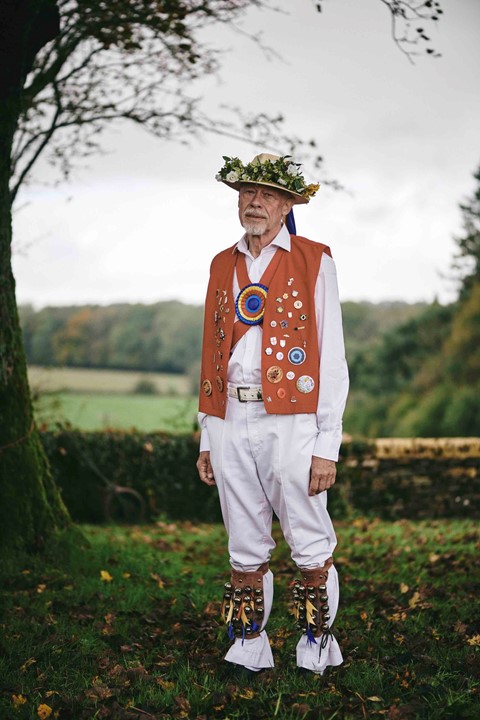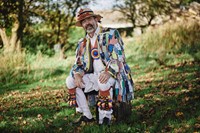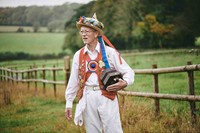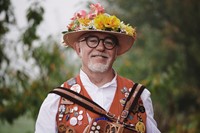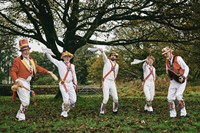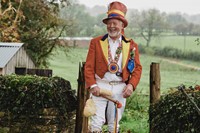Morris dancing has been practised for over 500 years in the UK, though it is largely dismissed as an eccentric, cultish hobby. Photographer Morgan O’Donovan meets the men who are trying to keep the tradition alive
Despite being a 500-year-old folk tradition in the UK, morris dancing is widely misunderstood. The practice – which is characterised by its ritualistic routines and loud, cultish outfits – has often been dismissed as an eccentric hobby for rural Englanders. “It is seen as a novelty or a nuisance,” says Bob Pierce, who has been pracising with Gloucestershire’s Morris Men for the last 46 years. “People are very happy to accept that the Irish, Scottish and Welsh can have their traditions. But English traditions are a joke.”
The Gloucestershire Morris Men are one of the few morris dancing groups still practising in the UK. Founded almost a hundred years ago in the Cotswolds Hills, they consider themselves custodians of the local area’s ancient dancing styles, maintaining a repertoire of over 50 different routines. They perform on various holidays – solstices, saint’s days, winter festivals – throughout the year, but it is arguably their outlandish style that attracts the most attention. To enliven their crisp white shirts and chinos, these men go all out, donning jackets made of torn, mismatched fabrics; straw hats scattered with wild flowers; and shin pads lined with bells. Depending on the chosen dance routine, they will then wave around handkerchiefs, sticks, and even swords. It’s a look that attracted fashion photographer Morgan O’Donovan, who has decided to capture the group in a new photo series titled Morris Men.
The Morris Men aesthetic speaks to the tradition’s pagan heritage, which is rooted in medieval British folklore and pastoral living. For the most part, Morris participants are men – often in their 50s and 60s – who have been dancing together for decades. As an anonymous member tells AnOther, its not just about the “exhilaration” of the performance, but also about the camaraderie: after dancing, they play instruments and songs, and socialise “for hours in the pub”. (That being said, Pierce is quick to debunk the myths that all Morris Dancers have “beer bellies”, and that they “are more concerned with drinking than dancing”).

However, the future for the Morris Men looks uncertain. While the tradition may have been embraced by younger men a few decades ago (many of the group’s current members took up the tradition in their 20s), it is now getting harder to attract fresh faces. In O’Donovan’s images, we see the full extent of this age skew: the majority of portraits are of older dancers, with only one younger-looking member among them. “Morris dancing is only a part of many traditions and local customs and we should try and keep them all alive,” urges Pierce. “Most customs would involve the residents of a village and in many cases complete families. The social interaction was invaluable, and that is lost today.”
Pierce’s fellow Morris Men member, Tony Poulter, has been dancing for 51 years, since he was around 25 years old. He echoes his friend’s concerns, but is decidedly more optimistic about the future. “We do our best to keep these customs going because they’re very old and it’s important that people see them,” he says. “I always impress upon young people that this is their heritage. I don’t know whether we will be able to keep our side going, but I hope so. We’re very resilient.”
